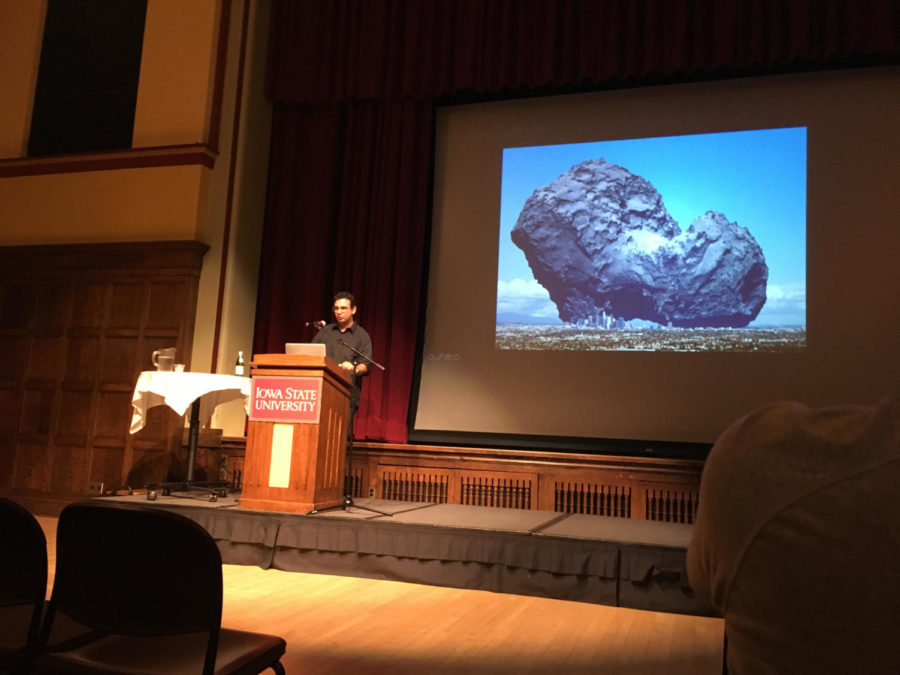NASA planetary scientists exploration for water in our solar system
Dawit Tilahun/Iowa State Daily
Dr. Essam Heggy spoke about the role of water in space exploration at the Memorial Union Monday.
September 12, 2017
NASA planetary scientist Dr. Essam Heggy lectured in the Memorial Unions Great Hall about the significance of water in space Monday. Heggy is an Egyptian scientist working in the Jet Propulsion Lab at NASA and has had an influential part in the Rosetta project and the Mars Orbiter project.
Being born in a desert environment, Heggy spent his life thinking of ways to develop a technique to find water in the Sahara. Now many years later, he is using this technique to analyze icy space bodies in our solar system.
“Comets are the transporters of ice in the solar system,” states Dr. Essam Heggy said.
A comet is a large body made of ice and is free from any specific orbit around the sun. Formed from outside the solar system to later be pulled in by gravitational disruption. It is when comets move across the solar system colliding with other parts of the solar system, that they cause ice to spread.
“We cannot understand the evolution of our own planet, without understanding the members of the solar system,” Heggy said.
Heggy elaborated this by giving a comparison of Mars to Earth. Looking at the polar caps of Mars, specifically the cross-sections of the large icy poles, we see that water has long been on Mars, which brings conversation of the potential of life.
Dr. Heggy emphasizes the importance of studying comets as compared to other planets, due to the fact that even if we did not study them, eventually the comet will come to us. Furthering this point, Heggy reiterates the dinosaurs’ experience with this situation.
These observations and studies of comets are important because, as Heggy said, they answer the question of “Are we going to be ready, when the moment of impact will come?”
“This missions name is Rosetta…because the Rosetta Stone allowed us to understand the past history of the ancient world, the same way that the Rosetta Mission is trying to understand the composition of our earliest solar system,” Heggy said.
A large difficulty faced in the Rosetta mission was the landing on an unknown surface. The rough terrain caused the lander to bounce multiple times, eventually causing it to disappear on the surface of the asteroid.
To give an idea of how complex this mission was, consider this: the Mars Rover had six instruments on board, whereas the Rosetta mission had 21 instruments on board. Even with all these additional instruments, the Rosetta mission led to the constant bouncing of the lander on Comet 67/P.
With the complexities of the mission, Heggy offered advice on how to be successful in science and in life.
“If you want to work on space missions you have to be perseverate…in real life, only perseverate people will make it,” Heggy said.
At the end of Heggy’s lecture, the fire alarm went off, prompting the evacuation of the lecture hall, the first time such an event had occured in 37 years.
Nonetheless, Heggy had left an impression on many students of the complexity of science, but also the characteristics that it takes to be successful.
“It was really inspiring to hear the story of perseverance after losing the rover,” said Riley Spick, a junior in biology.

















